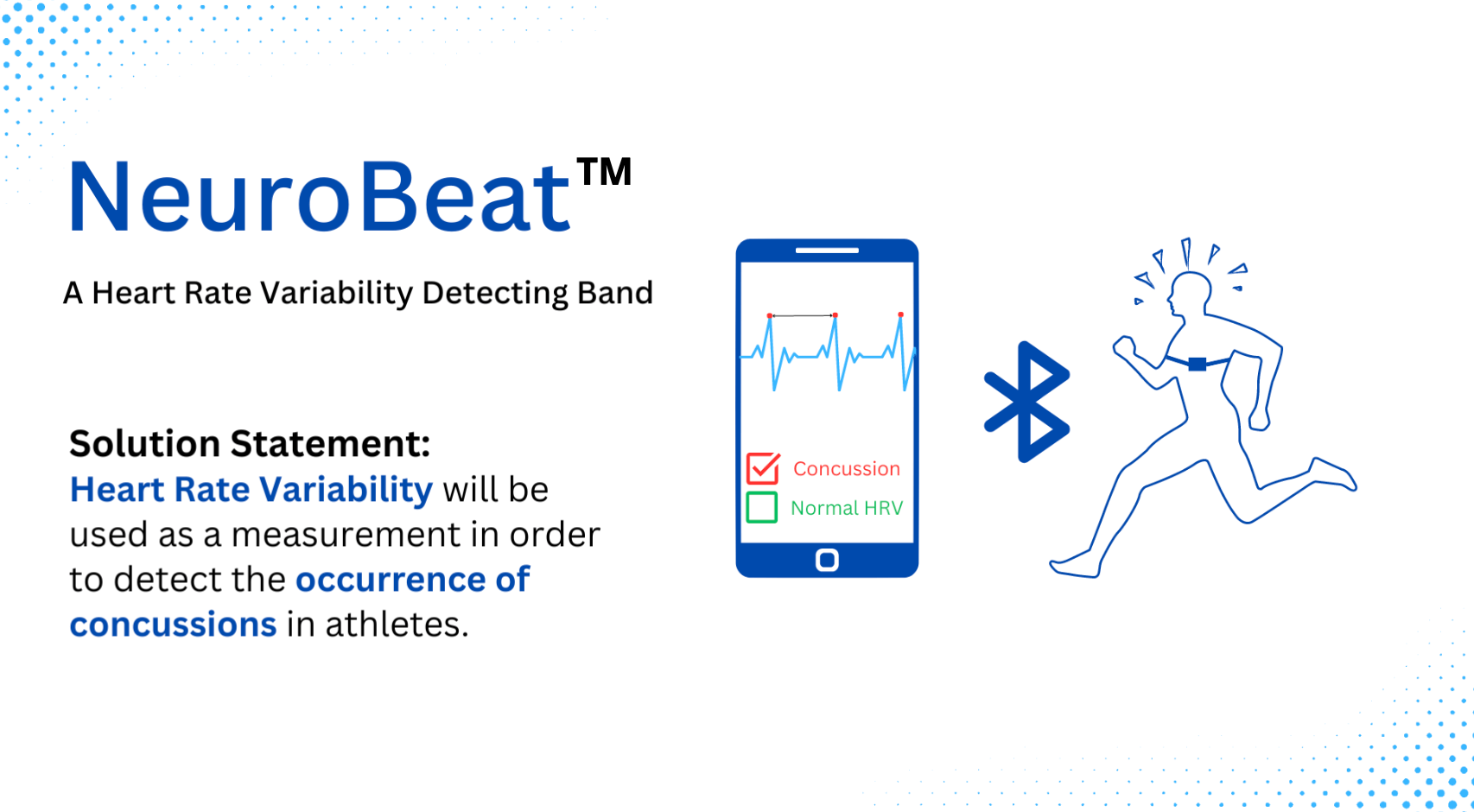Health Technology Showcase
Five Questions and an Elevator Pitch: The Brainiacs
 The Brainiacs team discusses a new way to assess the severity of acute head trauma sustained by athletes during games.
The Brainiacs team discusses a new way to assess the severity of acute head trauma sustained by athletes during games.
1. What is the need that your project seeks to address?
Naryeong: We're developing a device that can detect concussions based on heart rate variability, or HRV. The current standard of care, the Sport Concussion Assessment Tool, or SCAT5, relies on subjective tests like self-assessment of symptoms, questions to evaluate an athlete’s memory, and signs the coach or trainer can observe. It’s easy to manipulate, especially for athletes who want more playtime.
Mark: We’re trying to take away the subjectivity that results from the athlete putting pressure on themselves or feeling pressured by coaches or athletic trainers. We want to understand the physiological changes that a concussion causes and pinpoint whether an athlete has one, or doesn’t, to objectively determine whether the athlete is okay to play or not.
2. How does your solution work?
Sagarika: We have a heart rate-detecting band that the athlete wears around their chest. From the band, we get electrocardiogram, or ECG data, which is the electrical signal from the heart. We process that data and calculate the heart rate variability and a number of other measurements, and then feed these into our machine-learning algorithm to determine whether the data is indicative of a concussion.
Typically, as soon as it seems like a player has received a force to the head or may have a concussion, they get pulled from the game. Our goal is to leverage the same 15 minutes that it takes to administer the current concussion test to use our heart rate variability-based test instead.
3. What motivated you to take on the project? And what activities have you undertaken?
 The NeuroBeat heart rate variability detecting band
The NeuroBeat heart rate variability detecting band
Mark: It’s exciting to think about how many people we can impact and help – not just collegiate athletes, but high schoolers, middle schoolers, and young kids – and the peace of mind that parents can get from this, too.
Claudia: One of our teammates had a terrible concussion towards the end of the last school year. It impacted his finals, and he didn't get back to baseline for three months.
Naryeong: He’s a wrestler, and he participated in a concussion study with Dr. Jamshid Ghajar, who was also our group mentor, at the beginning of last quarter. Dr. Ghajar directed our team to think about HRV and using this novel biomarker to connect concussion with an actual physiological quantitative value.
Sagarika: We searched for publicly available data sets that had the ECG readings we needed, from patients with traumatic brain injuries, or TBI, and from other healthy patients. We analyzed the data to determine if there were links between heart rate variability and concussions and used that to train our machine-learning classifier, which categorized heart rate variability readings as signaling concussions, or not, with 86 percent accuracy.
Claudia: Mark and I also collected data from athletes at Stanford. Heart rate variability is an indicator of how well a body’s autonomic nervous system is functioning, so we’ve conducted tests that specifically disturb the autonomic nervous system to see if our algorithm is sensitive enough to classify this as concussion or not.
The tests include having an athlete spin before doing workouts, quizzing athletes to elicit a stress response, or giving them a list of words to memorize and repeat after an exercise test. We also instruct athletes to sleep five or less hours the night before the evaluation so we could see how that affects the autonomic nervous system and HRV as well.
4. What are the most important things you learned in advancing your project?
Mark: It has been helpful doing test runs and learning where we were faulty in our initial thinking, and then iterating and making our work better.
Claudia: Our team also was good at dividing and conquering. Mark and I collect the data, design the experiments, and make sure the data is gathered in a very similar way across different people. Sagarika and Naryeong oversee the machine learning and making sure that the algorithm is properly trained.
5. What advice do you have for other aspiring health technology innovators?
Naryeong: Make use of the resources that Stanford gives you. You have an immense wealth of mentors, faculty, and professors. If you reach out, they're very much willing to meet with you and give you pointers on your project.
Original team members: Jackson DiSario, Mark Fisher, Naryeong Kim, Sagarika Samavedi, Claudia Zimmerman
Course: Bioengineering Capstone
Biodesign NEXT funding: Awarded for spring 2023
